Nikki Noriko Kuresumi is a Japanese artist who lives and works in New York City. She is known for her elegant, sensual ceramic sculptures, which are inspired by the harmony and balance of the ocean.
In her work, she is mostly focused on organic shapes that are inspired by the ocean. While her artist statement on this subject is succinct and straightforward.
Noriko Kuresumi Artist Statement
Before we get into the artist statement what is the main reason why you like Noriko’s artwork? I am sure there are multiple reasons but there must be on main reason, right?
“The sea is the origin of life.
All lives are connected and have been supporting each other.
I create my work by imagining the source of harmony and balance of the ocean.”
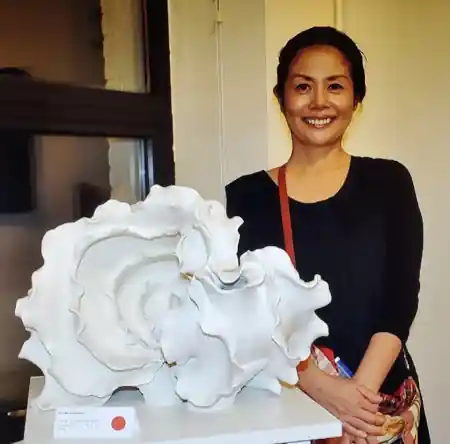
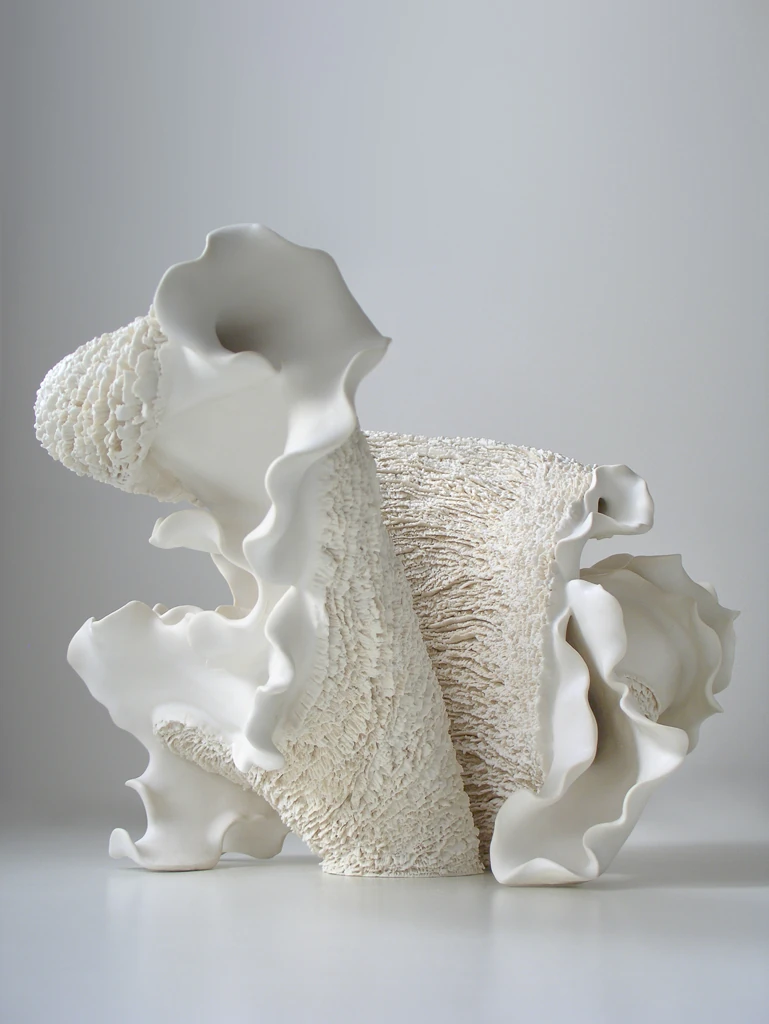
Intriguing Insights: What Draws People to Noriko’s Art?
Our research reveals that the primary allure of Noriko’s art lies in its organic shapes, captivating 57% of survey respondents. Equally compelling are the aspects of quality and personal connection to the artwork, each garnering 43% of the survey’s favor. Surprisingly, a mere 7% of respondents appreciate her art solely for its decorative value.
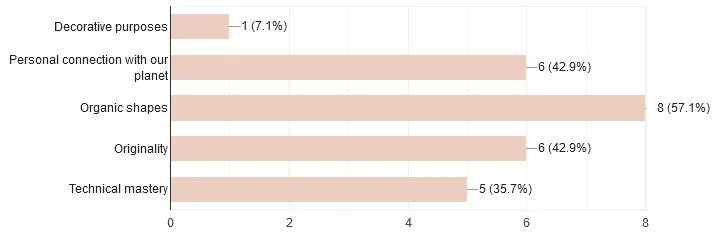
Noriko Kuresumi’s Style (unique qualities)
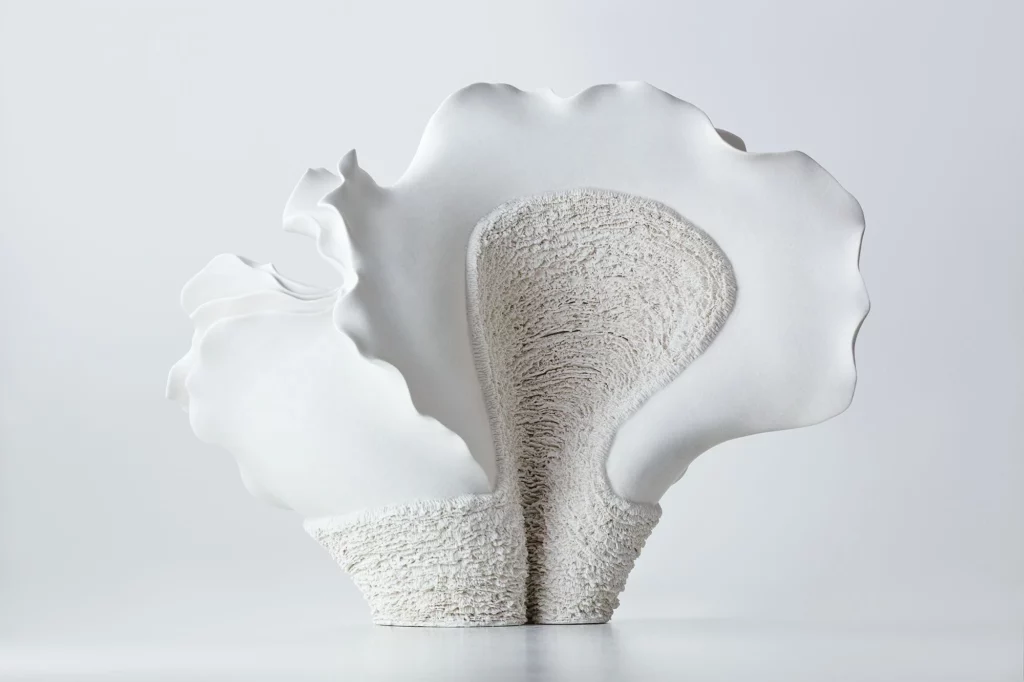
Unique qualities: Her small-scale ceramic sculptures are graceful, despite the fact that they are made of thin, fragile ceramic materials oscillating between beautiful contrasting textures. They are balanced between the poles of elegance and fragility, just as the living forms from which they derive their inspiration are.
As akin to the planet we live on as to her artwork, living, fragile, balanced, and existing in complete harmony. It is proposed by the balance of nature that ecological systems are usually in a stable equilibrium or homeostasis, which means that a small change in a parameter such as the size of a specific population, for example, will be corrected by some negative feedback that will bring the parameter back to its original “point of balance” with the rest of the system.
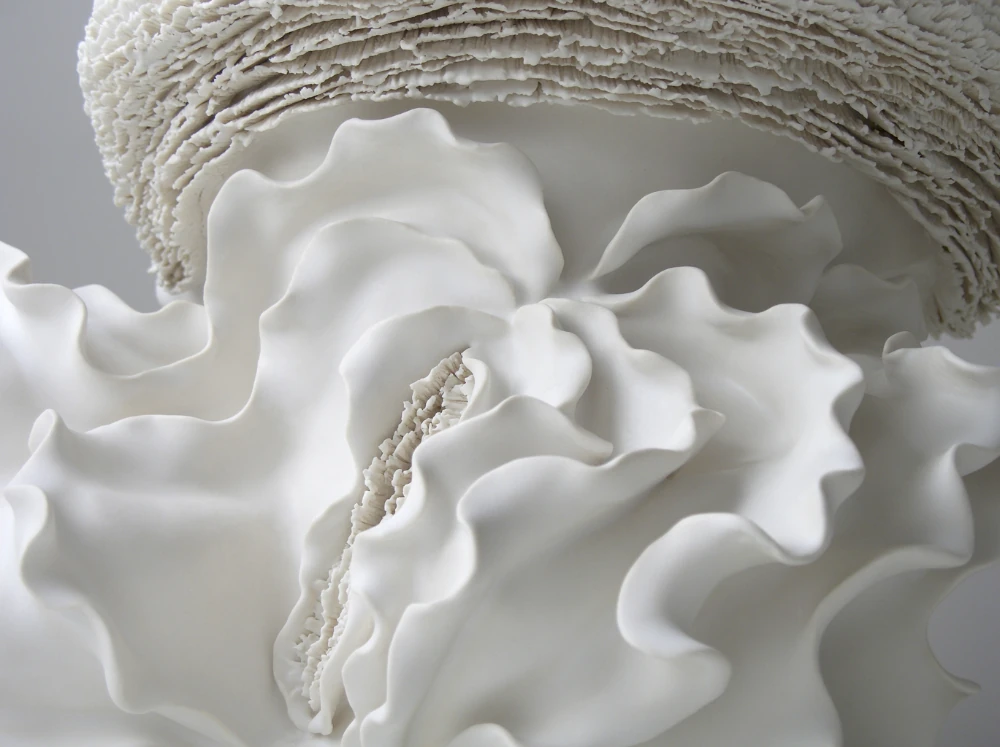
At times, the equilibrium is shown as easily disturbed and delicate, while at other times, it is portrayed in the inverse, as powerful enough to fix any imbalances on its own. But when I look at Kuresumi’s art I do not see the ability to correct imbalances I see the beauty and fragility. And I believe this is exactly what she wants to convey to the audience.
What immediately comes to my mind is the circle of life and how fragile it is. The balance of nature, which is commonly referred to as “the circle of life,” is a key theme in the 1994 film The Lion King, which was directed by Peter Jackson. During a moment in which Mufasa is speaking to his son Simba, the character outlines how everything exists in a condition of delicate balance.
Kuresumi’s artwork is a balance of life.
Noriko Kuresumi’s Creative Process
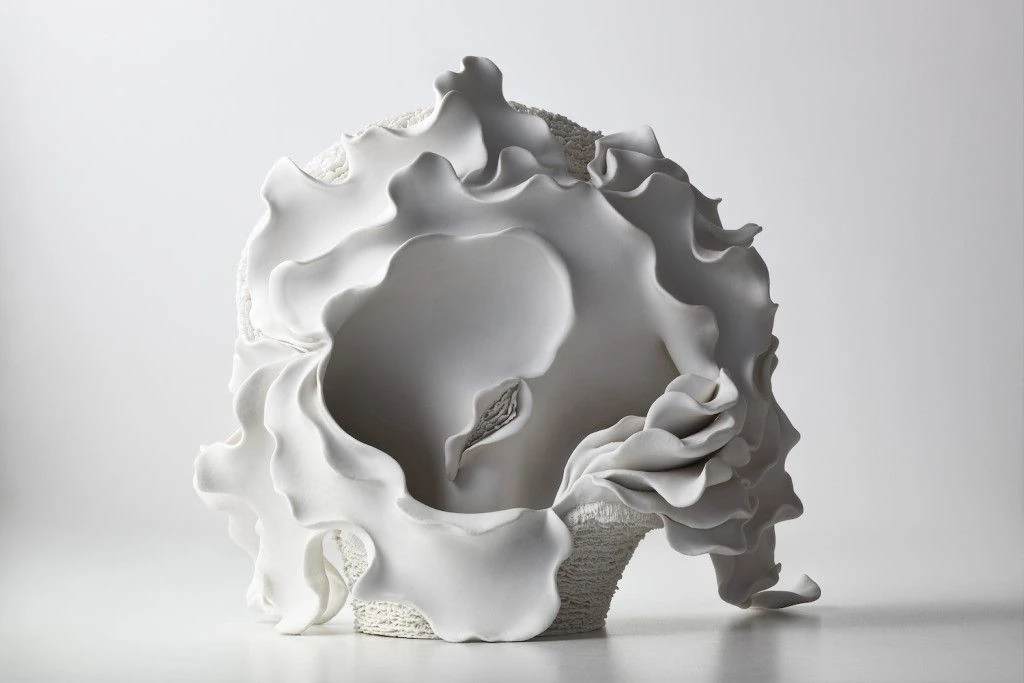
It seems she has a background in painting but has never attended an art school of any kind. It is assumed that she is self-taught. As is true for most self-taught artists, they rely on their own dedication and hard work to learn and enhance their ceramic artwork. From experience, I can tell you that what Noriko Kuresumi has accomplished is no easy task. To be a self-taught artist, you have to be very dedicated and have an insatiable appreciation for learning and experimenting to find what works.
As an artist, I often will draw a crude sketch on paper before I start working with the clay. This way I already have an idea in my head before starting the artwork. But when I look at Nikki’s I really can’t imagine starting with a sketch. Maybe, I could start sketching something but I do not think it would be very helpful. Instead, I believe she approaches her work (I am guessing here) is by starting to work with the clay, and then when in “the zone” so to speak the final form reveals itself.
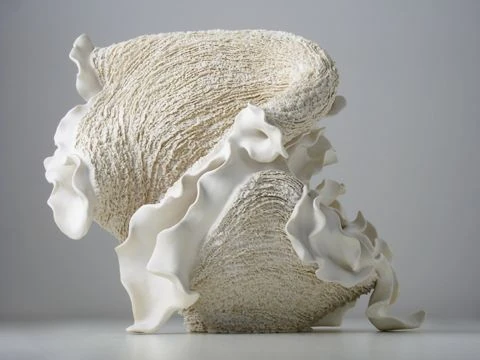
My analogy is that the final artwork comes in clarity mid-process, like a ghost that all of a sudden manifests itself. This has happened to me at times while working with clay. I would start with a general shape and then, all of a sudden, while working with the clay, the clay responds. She is instinctively communicating with the clay, and the clay responds, and the cycle continues till both are satisfied with the final form.
For more please visit her com/ website: Noriko Kuresumi
Noriko Kuresumi’s Awards

- First Prize,”18th Tokyo-New York Friendship Ceramic Competition”(NY)
- People’s Award, “15th Tokyo-New York Friendship Ceramic Competition” (NY)
- Honorable Mention,”The 8th Cheongju International Craft Competition” (Republic of Korea)
- 4th Tokyo-New York Friendship Ceramic Competition” (NY)
- First Prize, “13th Tokyo-New York Friendship Ceramic Competition”(NY)
- Honorable Mention, “ The 7th Cheongiu International Craft Competition” (Republic of Korea)
- Semi Finalist “ONE” Manifest Gallery (OH)
- Third Place, “The Majestic National 5th Annual Juried Competition 2010” (OH)
- Honorable mention, “The 6th Cheongju International Craft Competition” (Republic of Korea)
- Honorable mention, “The Fourth Annual Majestic Juried Competition 2009” (OH)
Public Collections
National Museum of Solovenia
Images pinterest = Noriko Kuresumi





